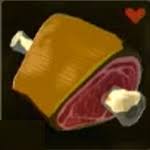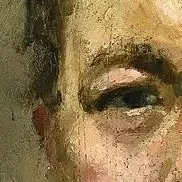Paul Sérusier sojourned in Pont-Aven during the summer of 1888, as Paul Gauguin, whose advice he followed. On his returning to Paris, he showed his young fellow painters, the future “Nabis” (“prophets” in Hebrew), what was to become their “Talisman”. A close observation of the painting allows one to recognise certain elements of the landscape represented : the wood, at the top on the left, the transversal path, the row of beech trees on the river bank, and the mill, at the back, on the right. Each of these elements is a stain of colour. According to Maurice Denis, Gauguin had told Séruzier : “How do you see these trees? They are yellow. So, put in yellow; this shadow, rather blue, paint it with pure ultramarine; these red leaves? Put in vermilion”. Although they were determined that visual sensation should prevail over the intellectual perception of the world, the impressionists had not given up a conception of painting implying the representation of what they observed. Here the mimetic conception is thoroughly replaced by the search for a coloured equivalent. Maurice Denis explained that in front of this landscape, he and his friends felt “liberated from all the yokes that the idea of copying brought to [our] painters’ instincts”. Posterity was to see - in retrospect – in this painting the manifesto of a pure painting, autonomous and abstract, related to Maurice Denis’s famous statement: “Remember that a painting, before being a battle horse, a nude woman or any anecdote, is essentially a plane surface covered with colours assembled in a certain order.”, that was not published before… 1914, in Theories…
https://www.musee-orsay.fr/en/artworks/le-talisman-paysage-au-bois-damour-8028
So how much of this abstract thought is a result of the then-new photography competing with traditional painting? The quote about being freed from copying sounds a lot like sour grapes after a machine now doing it better than you, which has some interesting parallels to today’s AI art


